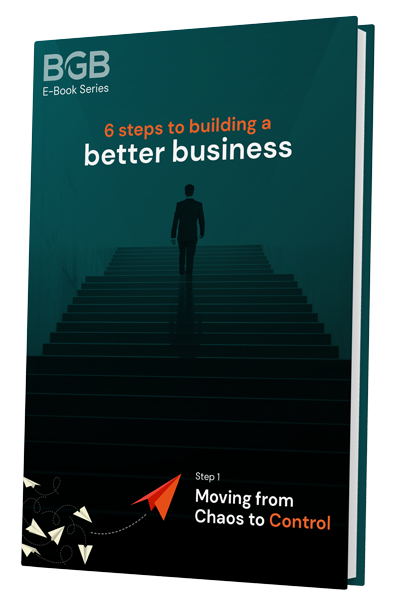As a business owner, you sell something. It might be a product, it might be a service, but either way, it’s a solution. Your customers need what you’re selling.
Where most business owners go wrong is they treat job candidates differently from their customers.
A job candidate has a problem – they want a job.
You have a solution – a role vacancy.
You also have competition – other job offers.
So start treating your job ad like its name suggests, as an advertisement!
Read on to learn the 3 keys to writing effective job ads that convert.
What is a Job Ad?
A job ad, also known as a job post or job listing, is how you communicate to potential applicants that a role in your business is available. It will typically include information about the job’s duties, qualifications and salary, as well as how to apply.
What is an Effective Job Ad?
An effective job ad does much more than merely tell candidates what they can expect to do, and receive, from your role.
It will actively sell the benefits of working in your business, while also filtering out unsuitable applicants by being very explicit about your company culture and values and what will be expected of an applicant..
The 3 Keys to Writing an Effective Job Ad
To help you learn how to write an effective job ad that converts, you should think about how an ad functions in 3 sections:
- The ad needs to be found or what’s the point of even posting it?
- The ad needs to be readable, or what’s the point of even posting it?
- The ad needs to be able to convert, or what’s the point of even posting it?
Seeing a theme here?
The goal of the 3 keys is to get applicants to find, read, and apply for your ad.
If one of the keys is missing, the other two are pointless. But if all 3 are combined you’ll have an incredibly effective job ad!
1. Can it Be Found?
No matter how good your job ad is, it’s useless if nobody ever reads it. Follow these tips to make sure it’s visible.
Optimal Post Times
If you’re using sites like Seek or Indeed to advertise a role, there is nothing wrong with that. They are popular for a reason and will expose your ad to a large number of potential applicants.
With that said, where businesses go wrong is their post duration. Only post an ad for 1 week, including a full weekend. Any longer than that and you are wasting your time and your money.
The best-performing job listing sites charge you for your listing. After a full week, anyone who would’ve applied has already. After this point, you’re just paying for the ad to sit there without any engagement.
Instead, take this as a sign that your ad isn’t working, and refresh it before posting again.
Leverage Social Media
Social media, especially LinkedIn, is another fantastic way to reach prospective employees.
Using a mix of organic, boosted or paid ads (depending on need and budget) use social media to connect with a broad audience.
An advantage of social media job ads is even if the user isn’t the one looking for your role, they can easily share it with someone who is looking, extending your reach.
Search Engine Optimisation (SEO)
Ensure your job ad is SEO optimised by including the keywords that applicants are likely to be using.
For example, if you’re advertising a role for a junior sales assistant, make sure that term is in the title. Odds are, people wanting to become junior sales assistants are also using that term.
Where businesses often go wrong is trying to be interesting with a title like “Here lies your dream job!”, but not realising that it’s too vague for search engines to pick up.
Salary Range
Whether you disclose the salary in the job description or not (we’ll return to this later), most job listing sites will allow you to set a hidden salary range. This determines where your ad will be displayed when people set their salary range filter preferences.
Make sure your range is honest. There’s no point in attracting applicants who are expecting a vastly higher salary than you can afford to pay.
2. Can it Be Read?
Now that you know people can effectively find your job ad, let’s make sure they are able to read it!
Headlines and Formatting
Notice the plural – headlines not headline.
That’s intentional.
Your main headline is obviously very important, but don’t overstate its importance. If it includes the job title and relevant keywords, it has done its job. Any applicant looking for the job you’ve described is going to click it.
But within the content of your job ad, there are going to be secondary, much more important headlines. These are the ones that will help the candidate read your post.
Each section of your ad needs to be clearly signposted with a headline that is clear about what the section contains. This way the reader can skim to sections they care about.
If your ad is just one big chunk of text, readers are going to give up and move on.
The easier you can make reading the ad for them, the more likely they are to apply.
Brevity
In a similar vein to headlines and formatting, making sure you keep your content as brief as possible is essential. You need to find a balance between writing enough to get your business personality across (more on that later), but not so much that your reader never finishes the ad.
This is most important in the qualifications section!
Each of these points should be as brief as possible. If you have points which span more than a line, either cut them down or see if they are actually two separate qualifications that you have joined together.
Ideally, this section should read like a checklist, where the applicant can mentally ‘check off’ which qualifications they have as they read the list.
Language
The primary goal of language shouldn’t be to impress, it should be to communicate.
Avoid words that are:
- Big
- Fancy
- Uncommon
- Jargon
- Vulgar
If you don’t use those words, your ad will naturally be easier to read and understand.
Emphasis
Don’t be afraid to use bold and italics, or even changes in font size to direct emphasis to certain parts of your ad. Just like headlines, this can help readers skip to the parts you want them to read most.
With that said, avoid using all caps. The human brain usually receives all caps as aggressive or desperate – neither of which you want to be.
SO DON’T DO IT!
See…it makes us sound like a lunatic…
3. Can it Convert?
They’ve found your ad, they’ve read it, and now you just need to get them to apply for it.
A good way to think of your job ad is like a landing page for your marketing materials. It should take the reader on a journey, leading them to the call to action, which in this case is to apply.
Job Description
First up after the headline is the job description. Unlike your headline which gave an industry-standard job title, this is your chance to elaborate beyond the keyword.
This should only be a single line and should be bolded for emphasis. It will serve to provide more context about the role.
For example, if your headline was for a “managing director”. Your description line might specify “a managing director specialising in the finance sector”.
Salary
This was touched on earlier, but it’s worth reiterating. Many businesses are reluctant to share the salary they are willing to pay.
But consider this, if you had a job ad that was advertising your desired salary range, and another one that didn’t disclose salary, which one would you apply for first?
That was rhetorical.
Don’t be worried about excluding people who want a higher salary than you can provide. Even if they’d applied, they still wouldn’t have taken the job, but you would have wasted time interviewing them. Disclosing salary is a win-win.
Unique Selling Proposition (USP)
This is a term we’ve borrowed from marketing, but since you are looking to market your job opportunity, it fits perfectly.
Think of one thing your business offers that most other businesses don’t. This might be access to a well-known training program, additional rostered days off per month, or a hefty signing bonus. Whatever it is, say a sentence or two about it right at the start of your ad.
Your Business Personality
Another way to think of this is a short bio of your business. Treat it like a dating profile and try to convey as much personality as possible over a few sentences.
The key here is managing expectations. If you prefer a fast-paced, competitive work environment, don’t describe your office as fun and social, describe it as innovative, challenging, rewarding and career-oriented.
Too many businesses try to capture as many applications as possible by being misleading when what’s actually beneficial is attracting fewer, higher-quality applicants.
Another thing to remember is that your business personality shouldn’t end with this section. Weave hints of it throughout your entire ad with tone of voice. If a funny tone best represents your business, make plenty of jokes.; On the other hand, if being more serious is a better fit, write assertively and confidently.
Qualifications
The qualifications section must be straightforward, with that said there are 3 mistakes we often see:
- Listing unnecessary qualifications to make the role sound more complicated
- Overcomplicating simple skills (saying “inbound and outbound communication” when it’s really “answering phones”)
- Not distinguishing between mandatory and preferred qualifications (ideally these are separate lists)
Culture and Values
This section differs from business personality because it is much more direct. List positive aspects of your business culture and values so that they can be easily read and digested.
For example, write:
- Career opportunities
- Marketplace of ideas
- Lateral thinking is encouraged
- Healthy office banter
- Friday work drinks
- Monthly BBQs
As an applicant reads this list, they develop a better picture of your work environment.
Application Process
Let’s get this one out of the way first. If your application process is confusing or poorly articulated, you will not get any applications!
Remember, you aren’t the only person offering a job, and by making it hard to apply, you’re expecting the applicant to jump through another hoop. If that’s one more than your competitors, you’re at a disadvantage.
Have You Considered Business Coaching?
There you have it – the 3 keys to writing an effective job ad that converts.
But recruitment is just one aspect of business where owners can feel out of their depth.
No matter what you’re struggling with – from cash flow and sales to processes and systems – expert advice and direction can put your business back into a growth phase.
P.S. Whenever you are ready…
Here are three ways we can help you grow your business.
- Get the ‘finish your business’ checklist: The complete step-by-step recipe to have all the ingredients in place to actually finish your business. That means it works without you and gives you a great life. Click here.
- Join and connect with other entrepreneurs that are building great businesses: It’s our Facebook community where smart business owners are learning to get more customers, build winning teams and put their businesses on autopilot. Join now.
- Apply to become a member of BGB: If you would like to be considered for membership and go from working in your business to working on your business… send us a message and put ‘membership’ in the subject line… tell us a little about your business and what you’d like to work on together, and we’ll get you all the details.





